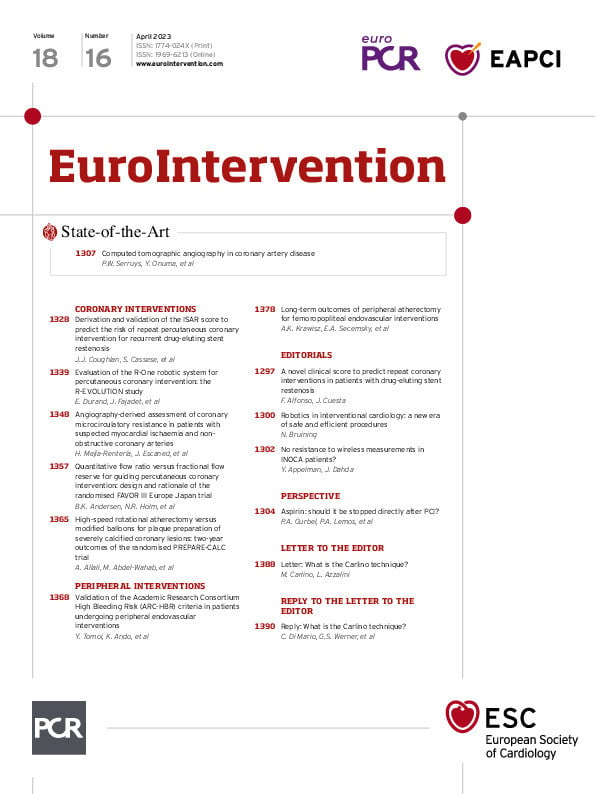The invention of cardiac catheterisation, as well as the various options for minimally invasive and rapid treatment of cardiac patients that followed, has revolutionised cardiology. There is great anticipation of how the technology will continue to develop in the future. Several review articles show what the interventional labs of the future could look like, with applications such as artificial intelligence for clinical decision support, multimodal imaging, virtual/augmented reality integrated tools, and robotics12.
While the use of X-rays for visualisation of coronary arteries and catheters has resulted in many positive technological achievements and significant treatment benefits, it also has major disadvantages due to the long-term adverse effects of radiation exposure. It's challenging to maintain consistently high levels of protection from radiation, and factors such as heavy lead skirts, gloves, and goggles, the need to maintain a distance from the X-ray tube while performing procedures, and the use of protective barriers can contribute to suboptimal protection. In the early days of cardiac catheterisations, there may have been less awareness of the potential adverse effects of radiation exposure. The harmful effects of long-term radiation exposure may take time to become evident. In recent years, there have been reports of colleagues who have potentially died as a result of years of radiation exposure, which has brought increased attention to this issue3.
Besides the aforementioned protective measures, which can be challenging to use regularly and may also cause harmful side effects (e.g., lead skirts, which can harm the back), reducing the amount of radiation produced by the X-ray system itself could be a viable solution. This systemic approach is more integrated and would not require constant attention from the interventional lab staff, allowing them to focus on treating patients. Despite significant efforts by heart centres with dedicated interventional lab technicians4 and collaborating industries to reduce radiation doses, the task has proven to be challenging. One major drawback of this solution is the inverse relationship between image quality and radiation dose. Higher radiation levels often produce "better" image quality, which is usually preferred despite the increased exposure to radiation.
In the early 2000s, magnetic navigation5 emerged as a new option for patients with complex and tortuous coronary anatomies, chronic total occlusions, and those requiring remote-controlled percutaneous coronary interventions (PCI). This approach promised to reduce procedure times, contrast use and radiation exposure. However, it ultimately proved to be less successful than expected. The cardiac dynamics and mechanical benefits of manually manoeuvring a guidewire proved too challenging for the magnetic navigation system. The system was physically large, expensive and required significant architectural modifications to the hospital building.
Meanwhile, in another field of medicine, the use of robotic technology for surgical procedures was being developed. Today, many robotic surgical systems are available, with the da Vinci system (Intuitive Surgical) being perhaps the most well known6. In 2006, Beyar et al introduced the first robotic system for PCIs7. This interventional lab table-mounted system was designed for remote-controlled PCI procedures and primarily aimed at protecting operators from radiation exposure.
Despite the presentation of the first PCI robotic system in 2006, it took a considerable amount of time for the concept to become more widely accepted. Nowadays, several more advanced robotic systems are available8, featuring improved capabilities to manipulate guidewires for the delivery of balloons and stents. Some systems can even be operated from remote locations, allowing for greater flexibility and accessibility8.
In the current issue of EuroIntervention, Durand et al9 present the results of a multicentre trial for one of the latest PCI robotic systems. The study showed both clinical and technical success, achieving the key objectives of safety and effectiveness for patients while significantly reducing radiation exposure for interventional lab personnel. Notably, the authors compare this system with other similar systems, making it a valuable read for us.
It is important to note that most feasibility studies on robotic-assisted PCIs primarily focus on procedural and technical outcomes, with some including operator satisfaction as an outcome. However, it is also important to consider the potential psychological impact of the high-tech interventional laboratory environment on patients, particularly when they are alone on the table without direct access to staff and are connected to a robot. To address this issue, novel approaches, such as using virtual reality glasses to prepare patients and reduce stress could be considered10. The technological advancements in PCI procedures, including the use of robots, offer reported benefits, and it is expected that they will become an essential component of interventional laboratories, ultimately reducing operators' exposure to harmful radiation.
Conflict of interest statement
The author has no conflicts of interest to declare.

